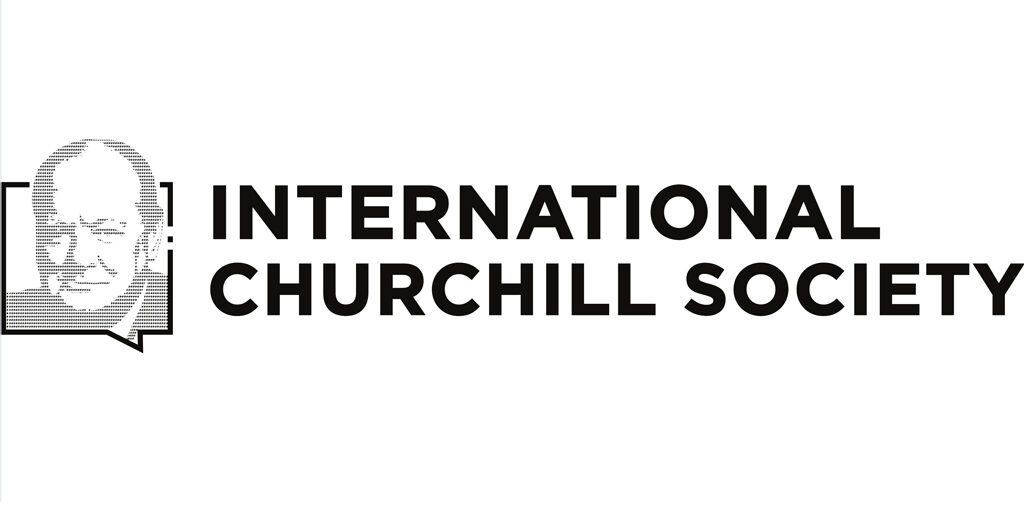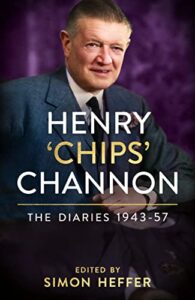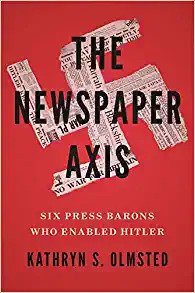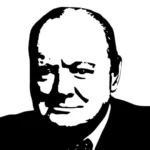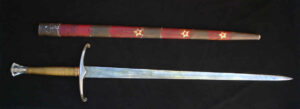
Finest Hour 201
“Peaceful Coexistence”
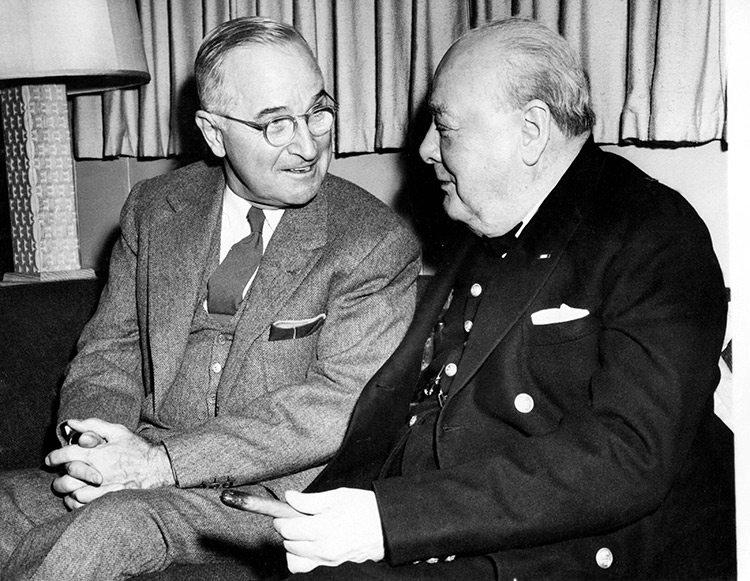
Truman and Churchill, 1952
September 25, 2024
Churchill and the Soviet Union, 1945–55
Finest Hour 201, First Quarter 2023
Page 28
By Kevin Ruane
Kevin Ruane is Professor of Modern History at Canterbury Christ Church University (UK), a By-Fellow of Churchill College, University of Cambridge, and author of Churchill and the Bomb in War and Cold War (Bloomsbury, 2016).
Historian Robert Rhodes James once remarked that the “quandary of Winston Churchill may be simply expressed: there were so many Winston Churchills.” He went on to list, amongst others, Churchill the politician, artist, orator, historian, parliamentarian, journalist, soldier, adventurer, imperialist, dreamer, strategist, monarchist, egocentric, and romantic.1 When it comes to Churchill and the Soviet Union (USSR), we face a similar quandary; like the traditional Russian Matryoshka doll, multiple Churchills inhabit a single space.
To begin with, there is Churchill the fierce anti Bolshevik of 1917–1921, followed in the late-1930s by the pragmatic balance-of-power Churchill willing to set aside ideological prejudice in pursuit of an anti Nazi Anglo-Soviet alliance. This latter Churchill was present again in June 1941 when (as British Prime Minister) he extended the hand of friendship to Soviet dictator Joseph Stalin following Germany’s invasion of the USSR. Churchill loathed communism but recognised that Britain’s fortunes of war stood to be improved through an Anglo-Soviet alliance against the common Nazi foe.
From 1942, Churchill the Soviet ally co-exists with Churchill the wishful-thinker. Based on face-to-face encounters and correspondence with Stalin, he concluded that the USSR’s previous hostility towards the Western democracies owed more to traditional Russian mistrust of the outside world than to any ideologically inspired commitment to international revolution. Churchill even entertained the hope that Stalin’s hitherto territorially expansionist tendencies would be curbed as a result of the positive experience of working in wartime confraternity with both himself and US President Franklin D. Roosevelt.

2025 International Churchill Conference
Churchill misread Stalin. As war in Europe reached its climax in 1945, he witnessed what he called “a Russian tide of domination” inundate Eastern Europe, the Balkans and half of Germany.2 Desperate to reverse this tide, Churchill recast himself as an anti-Soviet warrior and instructed his military planners to explore the feasibility of war with the USSR to liberate Poland and possibly other countries in the Soviet sphere. When the British Chiefs of Staff raised strenuous objections, however, the plan—codenamed “Unthinkable”—was shelved.3
Churchill’s warrior instincts were reignited in July 1945. After being briefed by the Americans on the recent staggeringly successful first test of an atomic bomb, he quickly seized on the weapon’s diplomatic potential. “[W]e now had something in our hands which would redress the balance with the Russians!” he exulted privately. “[N]ow we could say [to Stalin] if you insist on doing this or that, well we can just blot out Moscow.”4
This was Churchill the atomic diplomatist, an advocate of the A-bomb as a means of compelling the Red Army’s withdrawal from Eastern Europe. But before he could fully integrate this new weapon into his Soviet policy, he was swept from power by Labour’s landslide in the summer 1945 General Election. In the months that followed, a depressed Churchill monitored from afar the “darkness and menace” accompanying the USSR’s consolidation of its sphere of control in Europe.5
Against this ominous backdrop, Churchill delivered his most famous post-war speech, at Fulton, Missouri, in March 1946. Best remembered for its “iron curtain” sound-bite, at the time the former prime minister’s hope was that the United States would assume leadership of the free world’s resistance to Soviet totalitarianism.6 A year later, when the United States answered his call with the promulgation of the Truman Doctrine, Churchill’s reputation as a Cold War prophet—if not the original Cold Warrior—was cemented.
For many people this is where the Churchill-Russia-USSR story begins to peter out, even though Churchill had almost another decade ahead of him as an international statesman. If the wider public are only dimly aware of the post-Fulton Churchill, this is partly the fault of historians. To be sure, there are some excellent scholarly studies of Churchill’s approach to the Cold War, but these are dwarfed by the mountain of literature focusing on his pre-1945 career.7 Biographers, too, often treat the post-war Churchill as an after thought.8 Yet Churchill’s Cold War, especially his handling of the USSR, is a story worth telling.
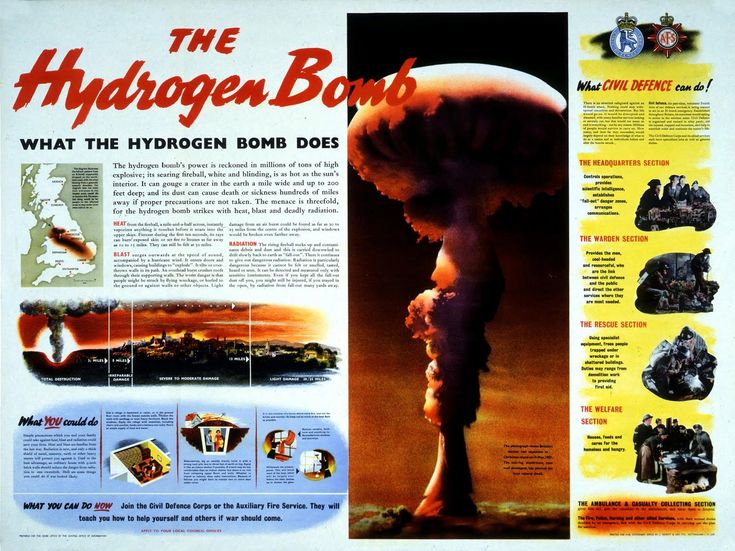
Opposition Leader
Out of power in the early post-war period, Churchill was unable to exert direct influence on American foreign policy, but he retained the hope, first kindled at Potsdam, that the US atomic monopoly would be employed in ways that would bring about the Red Army’s exit from Eastern Europe. In 1947 he wrote to President Truman, thanking him “from the bottom of my heart” for the Marshall Plan, but that initiative was predicated on containing the further spread of communism.9 Churchill, though, had not given up on the liberation of Eastern Europe. And in the US atomic arsenal he believed the West held the trump negotiating card, if only Truman would play it.
As leader of an opposition political party with ambitions to regain power, Churchill was careful to avoid publicly voicing his atomic thinking, lest Labour accuse him of war-mongering. In private, in contrast, he was unconstrained. Meeting with Canadian leader William Mackenzie King in 1947, Churchill argued the case for a US ultimatum to Stalin: either agree to Western terms for a Europe wide democratic settlement or “we will attack Moscow and your other cities and destroy them with atomic bombs.”10 He restated his case to the US Ambassador in London in 1948, adding that “the only vocabulary they [the Soviets] understand is the vocabulary of force.”11
These are just two examples of many instances in the 1945–48 period when Churchill spoke—albeit privately—of a nuclear-themed “showdown” with the USSR.12 But then two developments occurred which wrought a great change in his outlook. In September 1949 came news that the USSR had successfully tested its first atomic weapon. Although the United States held a substantial lead in the nuclear arms race, Churchill was badly shaken by the abrupt end of the American atomic monopoly. He received another jolt in January 1950 when Truman announced that the United States planned to build a hydrogen bomb, a thermo-nuclear weapon potentially one thousand times as destructive as the atomic bombs used against Japan in 1945.
In the Western Cold War alliance the popular reaction to Truman’s announcement balanced acceptance of the H-bomb’s necessity for defence with dark foreboding about its devastating power. Churchill was as disturbed as anyone, possibly more so. Fearing that any future world war might spell thermo nuclear doom for the entire planet, he proceeded to throw off the mantle of atomic diplomatist and reinvent himself as global peace-maker.
At a General Election rally in Edinburgh in February 1950, Churchill confessed that the “idea appeals to me of a supreme effort to bridge the gulf between the two worlds so that each can live their life, if not in friendship at least without the hatreds of the cold war.” He then called for “a parley at the summit,” a conference of US, UK, and Soviet leaders.13 This was Churchill the summiteer.
Cold War Prime Minister
Labour won the 1950 election but by so tiny a margin that another election was required in October 1951. This time the Conservatives secured a workable majority. During the campaign, Churchill declared that a summit was “the last prize I seek to win.”14 Once reinstalled as Prime Minister, however, he bowed to Foreign Secretary Anthony Eden’s advice that any approach to the Soviets must have American backing. To Churchill’s frustration, that support was slow in coming, partly because 1952 was a Presidential election year, a distraction for Democrats and Republicans alike, and partly because the new administration of the victor, Republican Dwight D. Eisenhower, needed time to bed-in.
In the event it was only in spring 1953, eighteen months into Churchill’s premiership, that his summitry gained traction. On 5 March, Joseph Stalin died. To Churchill, this epochal event opened up tremendous possibilities for East-West relations, a conclusion which gathered strength from early public statements by the new collective leadership in the Kremlin indicating support for détente. But when Churchill sought Eisenhower’s agreement to a summit he was rebuffed; a change at the top in Moscow, the President judged, did not mean a change in the basic anti-Western nature of Soviet foreign policy.15

Driven on by what Martin Gilbert called “a new sense of mission…to bring about, by his own exertions, a reconciliation” of East and West, Churchill ignored Eisenhower’s objections.16 In May 1953, he issued a public call for an early Big Three meeting on the wartime model. This proposal—contained in a speech to Parliament reported internationally—had not been cleared with the White House. Nor had he consulted his own Cabinet, knowing that most ministers shared Eisenhower’s caution. “It might well be that no hard-faced agreements would be reached” at a summit, Churchill conceded, “but there might be a general feeling among those gathered together that they might do something better than tear the human race, including themselves, into bits.”17
There was an element of “an old man in a hurry” to Churchill’s initiative. Nearing eighty years of age, he knew time was against him if he was to go down in history as a man of peace as well as a man of war. Indeed, the following month he suffered a stroke, a sharp reminder of his mortality, and for a time it looked as if his political career was over. Yet, astonishingly, he was back at work by October 1953, a remarkable recovery which Jock Colville, his principal private secretary, ascribed to a psychologically sustaining passion “to light the way to the end of the Cold War.”18
Unfortunately, Eisenhower’s opposition to a summit had hardened. “Russia was a woman of the streets,” he told Churchill in December 1953, “and whether her dress was new, or just the old one patched, it was certainly the same whore underneath.”19 Despite the force and crudity of Ike’s language, Churchill refused to yield. If a summit lessened Cold War tensions, it would also reduce the danger of hot—nuclear—war at a time when Soviet bombers had the operational range to reach Britain but not North America. A nuclear attack on the UK, he reminded Eisenhower, would mean the loss of “all we hold dear…and even if some of us temporarily survive in some deep cellar under mounds of flaming and contaminated rubble, there will be nothing left to do but to take a pill to end it all.”20
Coexistence
Churchill considered the atomic bomb to be “the perfected means of human destruction,” but it was “its monstrous child, the hydrogen bomb” that he fixated on.21 By 1953, both the US and USSR possessed a thermonuclear capability. This left the world, Churchill calculated, “as far from the… atomic bomb as the atomic bomb itself [is] from the bow and arrow.”22 The gap increased even further in spring 1954 when the United States tested its most powerful H-bomb yet. Codenamed Castle-Bravo, the blast in the Pacific generated an astounding 15-megaton destructive yield, along with unprecedented levels of deadly radioactive fall-out.
Churchill was horrified. “You can imagine what my thoughts are about London,” he wrote to Eisenhower. “I am told that several million people would certainly be obliterated by four or five of the latest H-Bombs.”23 With a mind oppressed by Castle-Bravo, Churchill began to re-evaluate his approach to the USSR and the Cold War. In June 1954 he gave a first public airing to his new thinking. “We have to live with all sorts of people in this wicked world,” he told an Ottawa news conference, and “hatred of communism” should not impede efforts to improve relations between the Cold War blocs. Henceforward, capitalism and communism had to live “side-by side.”24
This was a ground-breaking statement—a public endorsement by Churchill of the communist bloc policy of “peaceful co existence” which the Kremlin had been espousing since Stalin’s death. Just a few years before, he had favoured compelling the Soviet Union to release its grip on Eastern Europe on pain of nuclear destruction. Now he finally accepted that Eastern Europe was lost. Confronting the USSR was simply too dangerous in a world of H-bombs. Only “peaceful co-existence will avert the mass destruction of the human race,” he told parliament in July 1954.25
That same month, Churchill decided that a summit could no longer be subject to an Eisenhower veto. In a personal cable to Soviet Foreign Minister Vyacheslav Molotov he proposed a purely Anglo-Soviet meeting. He would even travel to Moscow if necessary.26 When Eisenhower learned of the cable, he was angry and upset. So was Churchill’s Cabinet, with several ministers, bitter at not being consulted on such a vital foreign policy question, threatening to resign even though their actions could bring down the government.
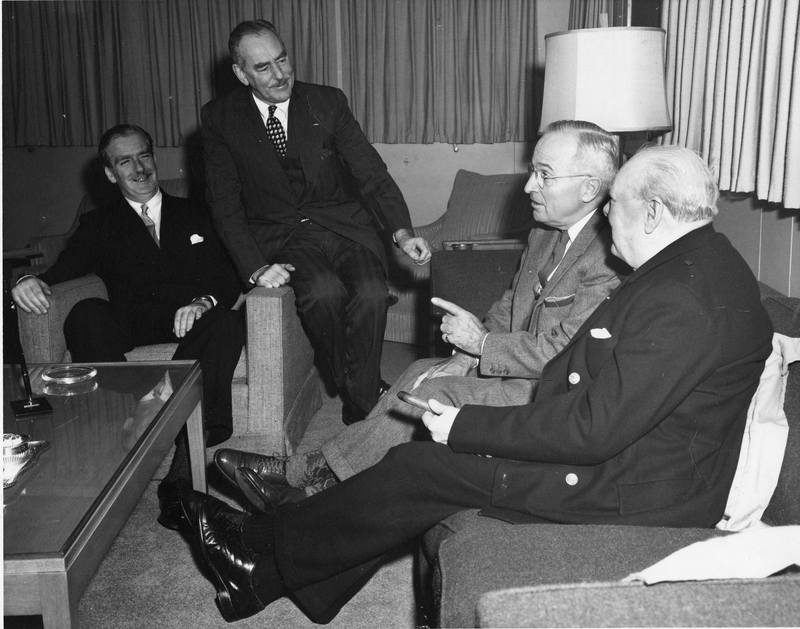
The Cabinet crisis only abated when Molotov rejected Churchill’s proposal and pressed instead for a multilateral conference involving the United States. Soviet documentation made available since the end of Cold War shows that Churchill’s anti-communist reputation, originating with his violent condemnation of the 1917 Bolshevik revolution, remained so potent that the Kremlin dismissed his summit diplomacy as suspect and insincere.27 In actual fact, Churchill’s conversion to peaceful co existence, born of profound nuclear anxiety, was genuine.
His Last Bow
One final Churchill deserves mention: pioneer of Mutually Assured Destruction (MAD). By the 1960s MAD had become commonplace in discussions about the nuclear arms race, but Churchill was showing signs of MAD-ness a decade earlier. In November 1953 he suggested to parliament that maybe “when the advance of destructive weapons enables everyone to kill everybody else nobody will want to kill anyone at all.”28 Similarly, in March 1955 he told the House of Commons that if the American and Soviet nuclear arsenals were roughly balanced that would make a new world war unthinkable. And then, “by a process of sublime irony we will have reached a stage in this story where safety will be the sturdy child of terror, and survival the twin brother of annihilation.”29
In April 1955, aged eighty, Churchill stood down as Prime Minister. Some in the Conservative Party hierarchy had grown resentful at his refusal to go sooner and regarded his Soviet summit diplomacy as a self-serving excuse for clinging to power. Churchill unquestionably hated the idea of retirement, but his contemporary critics were wrong; as the last surviving member of the original Big Three of the Second World War, he was convinced he had been preserved to deliver détente to a dangerously nuclearized world.
In a cruel twist of timing, Churchill’s dream of a heads of government summit came true a mere three months after he relinquished power. In July 1955, the American, British, Soviet, and French leaders met at Geneva. Writing to Eisenhower, Churchill said that he had “never indulged in extravagant hopes of a vast, dramatic transformation of human affairs” arising from such a gathering. But he still believed “that so long as we do not relax our unity or our vigilance, the Soviets and the Russian people will be increasingly convinced that it is in their interests to live peaceably with us.”30
Churchill made no mention of it in his letter, but Eisenhower’s earlier anti-summit stance rankled. It also lingered. Dining at Lord Beaverbrook’s home in the South of France in September 1957, Churchill said that he had just finished reading Nevil Shute’s On the Beach. The novel’s searing depiction of nuclear apocalypse made such a persuasive case for détente that he was minded to send a copy to Nikita Khrushchev, now sole leader of the USSR. When a dinner guest asked if he would post a copy to Eisenhower too, he said no; it would be “a waste of money.”31
Churchill would not live to witness the first real flowering of détente from the late 1960s. Even so, if we imagine him as a Russian Matryoshka doll, then “pioneer of détente” would be one of its constituent figurines. But that is only one of the Churchills that his approach to the USSR reveals; there is also anti-Bolshevik crusader, anti communist idealogue, Soviet ally, anti-Soviet warrior, original Cold Warrior, atomic diplomatist, East-West summiteer, proponent of peaceful co-existence, MAD man. But to appreciate most of these compelling Churchills, his post-1945 career deserves—even demands—proper attention.
Endnotes
1. Robert Rhodes James, “The Enigma,” in James W. Muller, ed., Churchill as Peacemaker (Cambridge: Cambridge University Press, 1997), p. 6.
2. Churchill telegram T.754/5 to Anthony Eden, 4 May 1945, CHAR 20/225/5, Churchill Archives Centre, Cambridge.
3. Joint Planning Staff report, 22 May 1945, CAB 120/691, The National Archives (TNA), London.
4. Alex Danchev and Daniel Todman, eds., The War Diaries of Field Marshal Lord Alanbrooke, 1939–1945 (London: Weidenfeld and Nicholson, 2001), pp. 709–10.
5. Mary Soames, ed., Speaking for Themselves (London: Doubleday 1999 edition), pp. 540–41.
6. Churchill, “Sinews of Peace,” 5 March 1946, International Churchill Society online resources, https://winstonchurchill.org/ resources/speeches/1946-1963 elder-statesman/the-sinews-of peace/
7. The standout Cold War study is Klaus Larres, Churchill’s Cold War: The Politics of Personal Diplomacy (New Haven: Yale University Press, 2002).
8. Andrew Roberts, in his deservedly acclaimed Churchill: Walking with Destiny (London: Allen Lane, 2018), devotes thirty one chapters to the years down to July 1945 but just two to the decade that followed.
9. Churchill to Truman, 27 September 1947, CHUR 2/158.
10. Martin Gilbert, Winston S. Churchill, vol. VIII, Never Despair, 1945–1965 (London: Heinemann, 1988), pp. 362–63.
11. Churchill, quoted in Amb. Douglas to Sec. Lovett, 17 April 1948, Foreign Relations of the United States: 1948, vol. II (Washington, DC, 1973), pp. 895–96.
12. For further examples see Kevin Ruane, Churchill and the Bomb in War and Cold War (London: Bloomsbury, 2016), chapter 9.
13. Churchill speech, 14 February 1950, CHUR 5/32.
14. The Times, 24 October 1951.
15. Ruane, pp. 222–26.
16. Gilbert, p. 774.
17. Churchill speech, 11 May 1953, in Hansard, House of Commons Debates (HCD), vol. 515, columns 893–98.
18. John Colville, The Fringes of Power: Downing Street Diaries 1939–1955 (London: Hodder and Stoughton, 1985), p. 671.
19 Ibid., p. 684.
20. Churchill-Eisenhower meeting, 5 December 1953, Dwight D. Eisenhower Presidential Library online collection, https://www. eisenhowerlibrary.gov/sites/ default/files/file/atoms_Binder5. pdf
21. Winston S. Churchill, The Second World War: Abridged One-Volume Version (London: , 1959), p. 963.
22. Colville, pp. 675–76.
23. Churchill to Eisenhower, 9 March 1954, TNA, PREM 11/1074.
24. Ruane, p. 269.
25. Churchill speech, 12 July 954, HCD, vol. 530, columns 34–49.
26. Churchill telegram T.240/54 to Molotov, 4 July 1954, TNA, PREM 11/669.
27. See Uri Bar-Noi, The Cold War and Soviet Mistrust of Churchill’s Pursuit of Détente, 1951–1955 (Brighton: Sussex Academic Press, 2008).
28. Churchill speech, 3 November 1953, HCD, vol. 520, columns 28–31.
29. Ibid., 1 March 1955, vol. 537, columns 1893–1905.
30. Churchill to Eisenhower, 18 July 1955, Churchill Papers, CHUR/217.
31. James Lees-Milne, Mingled Measure: Diaries 1953–1972 (London: Murray, 1994), p. 68.
Subscribe
WANT MORE?
Get the Churchill Bulletin delivered to your inbox once a month.
Oops! We could not locate your form.
Privacy